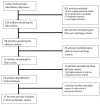A Systematic Review of the Clinical Value and Applications of Three-Dimensional Printing in Renal Surgery
- PMID: 31288411
- PMCID: PMC6678376
- DOI: 10.3390/jcm8070990
A Systematic Review of the Clinical Value and Applications of Three-Dimensional Printing in Renal Surgery
Abstract
The purpose of this systematic review is to collate and analyse the current literature which examines clinical applications of 3D printing for renal disease, alongside cost and time duration factors associated with the printing process. A comprehensive search of the literature was performed across five different databases to identify studies that qualitatively and quantitatively assessed the value of 3D-printed kidney models for renal disease. Twenty-seven studies met the selection criteria for inclusion in the review. Twenty-five were original studies, and two were case reports. Of the 22 studies reporting a qualitative evaluation, the analysis of findings demonstrated the value of the 3D-printed models in areas of clinician and patient education, and pre-surgical simulation for complex cases of renal disease. Of five studies performing a quantitative analysis, the analysis of results displayed a high level of spatial and anatomical accuracy amongst models, with benefits including reducing estimated blood loss and risk of intra-operative complications. Fourteen studies evaluated manufacturing costs and time duration, with costs ranging from USD 1 to 1000 per model, and time duration ranging from 15 min to 9 days. This review shows that the use of customised 3D-printed models is valuable in the education of junior surgeons as well as the enhancement of operative skills for senior surgeons due to a superior visualisation of anatomical networks and pathologic morphology compared to volumetric imaging alone. Furthermore, 3D-printed kidney models may facilitate interdisciplinary communication and decision-making regarding the management of patients undergoing operative treatment for renal disease. It cannot be suggested that a more expensive material constitutes a higher level of user-satisfaction and model accuracy. However, higher costs in the manufacturing of the 3D-printed models reported, on average, a slightly shorter time duration for the 3D-printing process and total manufacturing time.
Keywords: model; renal cell carcinoma; renal disease; renal tumour; simulation; surgical planning; three-dimensional printing.
Conflict of interest statement
The authors declare no conflict of interest.
Figures





Similar articles
-
A systematic review of clinical value of three-dimensional printing in renal disease.Quant Imaging Med Surg. 2018 Apr;8(3):311-325. doi: 10.21037/qims.2018.03.09. Quant Imaging Med Surg. 2018. PMID: 29774184 Free PMC article.
-
A Systematic Review of Three-Dimensional Printing in Liver Disease.J Digit Imaging. 2018 Oct;31(5):692-701. doi: 10.1007/s10278-018-0067-x. J Digit Imaging. 2018. PMID: 29633052 Free PMC article.
-
3D-printed patient-specific applications in orthopedics.Orthop Res Rev. 2016 Oct 14;8:57-66. doi: 10.2147/ORR.S99614. eCollection 2016. Orthop Res Rev. 2016. PMID: 30774470 Free PMC article. Review.
-
[Application of 3D soft print models of the kidney for treatment of patients with localized cancer of the kidney (a pilot study)].Urologiia. 2017 Dec;(6):12-19. Urologiia. 2017. PMID: 29376589 Russian.
-
Impact of Three-dimensional Printing in Urology: State of the Art and Future Perspectives. A Systematic Review by ESUT-YAUWP Group.Eur Urol. 2019 Aug;76(2):209-221. doi: 10.1016/j.eururo.2019.04.044. Epub 2019 May 18. Eur Urol. 2019. PMID: 31109814
Cited by
-
Uncertain But Not Unregulated: Medical Product Regulation in the Light of Three-Dimensional Printed Medical Products.3D Print Addit Manuf. 2020 Oct 1;7(5):248-257. doi: 10.1089/3dp.2020.0076. Epub 2020 Oct 15. 3D Print Addit Manuf. 2020. PMID: 36654918 Free PMC article.
-
Application of artificial intelligence in 3D printing physical organ models.Mater Today Bio. 2023 Sep 15;23:100792. doi: 10.1016/j.mtbio.2023.100792. eCollection 2023 Dec. Mater Today Bio. 2023. PMID: 37746667 Free PMC article. Review.
-
3D Printed Models in Cardiovascular Disease: An Exciting Future to Deliver Personalized Medicine.Micromachines (Basel). 2022 Sep 22;13(10):1575. doi: 10.3390/mi13101575. Micromachines (Basel). 2022. PMID: 36295929 Free PMC article. Review.
-
Multispecialty Enterprise Imaging Workgroup Consensus on Interactive Multimedia Reporting Current State and Road to the Future: HIMSS-SIIM Collaborative White Paper.J Digit Imaging. 2021 Jun;34(3):495-522. doi: 10.1007/s10278-021-00450-5. Epub 2021 Jun 15. J Digit Imaging. 2021. PMID: 34131793 Free PMC article. Review.
-
Three-Dimensional Customized Imaging Reconstruction for Urological Surgery: Diffusion and Role in Real-Life Practice from an International Survey.J Pers Med. 2023 Sep 26;13(10):1435. doi: 10.3390/jpm13101435. J Pers Med. 2023. PMID: 37888045 Free PMC article.
References
-
- Chepelev L., Hodgdon T., Gupta A., Wang A., Torres C., Krishna S., Akyuz E., Mitsouras D., Sheikh A. Medical 3D printing for vascular interventions and surgical oncology: A primer for the 2016 radiological society of North America (RSNA) hands-on course in 3D printing. 3D Print. Med. 2016;2:2–17. doi: 10.1186/s41205-016-0008-6. - DOI - PMC - PubMed
LinkOut - more resources
Full Text Sources
Miscellaneous

